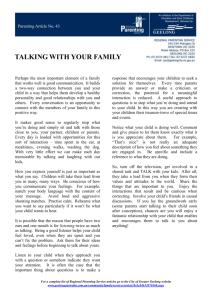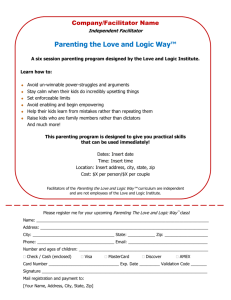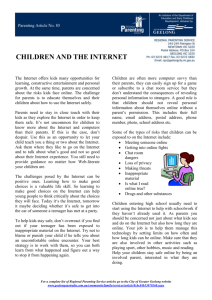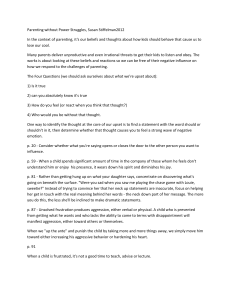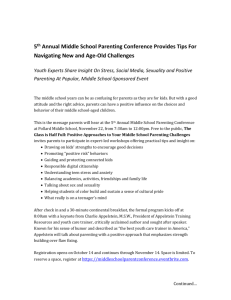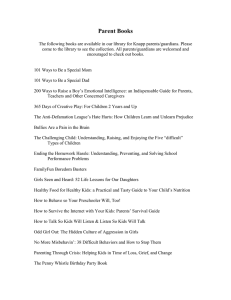The Path to Peaceful Family Life: Present Moment Parenting
advertisement
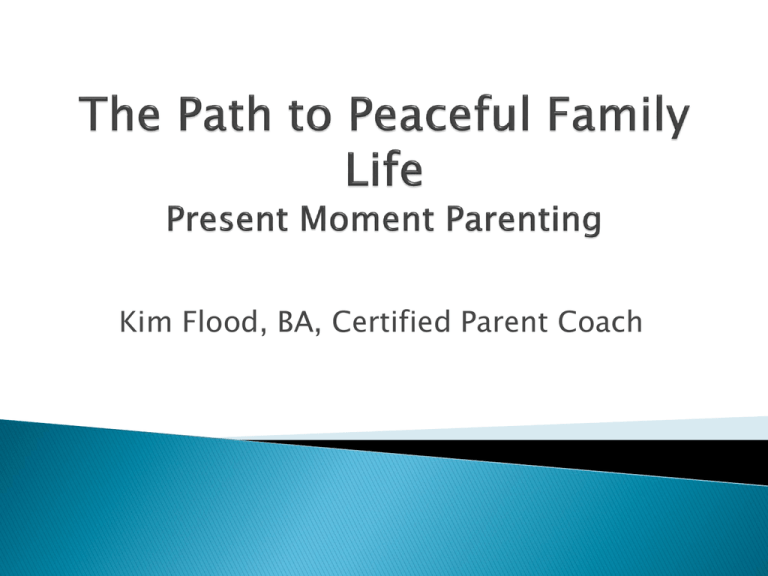
Kim Flood, BA, Certified Parent Coach Parents have a choice and the power to heal. It’s healing for both the parents and the children to learn new ways of interacting. Unwrapping Child Behavior A Physiological Approach Thinking about the effect of communication on the child’s BODY The child’s brain is seeking the same level of intensity. When it reaches that level, it is highly rewarding of the behavior. The Institute of Heartmath The heart is responsive to emotional input. The heart has its own neurological system and it sends messages to the brain! Messages sent repeatedly strengthen heart-brain neural pathways. Fight Flight Freeze Dr. Daniel Siegel’s The Mindful Brain Dr. Paul Pearsall’s The Heart’s Code Sunshine of our love Water of positivity for good behavior Fertilizer of teaching values When you … I feel … because … Your power is in the positives. Strengthening neural pathways increases the behavior you WANT. At what age do children start to willfully manipulate adults? When we live in fear, we miss the love. Punishment has three results: Temporary stoppage of the behavior The need to retaliate Fear For parents For kids We were all raised based on this model. Society is oriented this way, too. The A Power of Now New Earth Decreases fear for you Joins the child where he/she lives. Honors your relationship. Slows you both down. What is individuation? Ask questions rather than issue directives. Show sincere interest in his/her interests, friends, issues. Listen deeply. The New Way: Growing Desired Behaviors Plan for pregnancy, birth, and parenting. Respond with sensitivity. Use nurturing touch. Engage in nighttime parenting. Where they didn’t previously exist More than “catching kids being good.” Watch for successes wherever they may be. Some kids can’t take positives. “I know its hard or uncomfortable to hear the good things, but its my job to tell you the good things. Pretty soon you will get used to it.” Write notes. Can you think of an example besides talking to get the positive message across? The family meeting Say what you love about being in the family. Each person takes a turn and has as many turns as they need. Talk until you are finished. Say what you love about being in the family. End the meeting. Adds ceremony to your family life. Rewards and reinforces what you want: listening. Build family identity, creating belongingness. A forum for issues that everyone can use. Parenting on the “front end” of the behavior. Say what you love about being in the family (at the beginning of each meeting.) Report “like the news” about issues. Ask for solutions. Children make the rules. Start with “no.” Include the children in making the list. It’s their list. You are the secretaries. At the end, add to the list. Say, “We might need to make up rules on the spot.” Rules are only discussed when there has been no infraction (give no attention to infractions.) “Let’s have a do-over.” -Do-overs are very effective, as they teach the alternative behavior. -They move you toward the child, instead of away. Don’t start your answer with “no.” Don’t start your request with the child’s name. Ask a question. Play the scene as it happened, and then play it over with clear communication and respect. You have had the second family meeting. The rules are posted. The do-overs have been rehearsed when there is no infraction. You have switched roles to rehearse. It is simply a procedure. Let the kids know. “Did you see what your baby brother just did? What do you think he will do next?” Use do-overs whenever you can. Warning Negotiation Children are scientists Right now.

